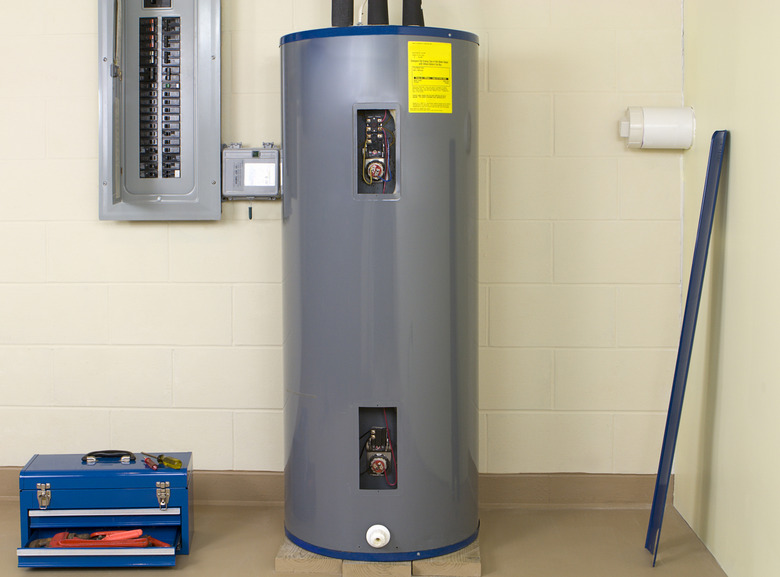Treatment Of Calcium Deposits In Water Heaters
Water heaters and plumbing systems in general are subject to early degradation due to calcium that is naturally found in water. Most of the water comes from the ground, and depending on the ground quality, it can build up high volumes of calcium. A good maintenance plan, either as a DIY project or professional service, can curb the calcium buildup, therefore extending the life of your water heating system. Did you know high water temperatures can cause calcium to separate more rapidly? Setting water temperatures between 120 and 140 degrees Fahrenheit maximum will help curb calcium deposits.
Calcium Buildup in Water Heaters
Calcium Buildup in Water Heaters
Calcium buildup in water heaters causes not only premature death of the hot water tank but also inefficiencies in the water heater itself. As the calcium buildup in the water heater progresses, it can act as an insulator on the hot water tank and all components that heat the water. This calcium buildup results in lack of efficiency by hindering the exchange of heat between the heat source (gas burner or electric elements) and the water.
Flushing the Hot Water Tank
Flushing the Hot Water Tank
Performing an annual flush of your water heater will remove calcium from your hot water tank. This is one of the basic DIY treatments for calcium deposits in water heaters.
- Shut off the water heater by turning off its circuit breaker (for electric models) or turning off the gas control valve (for gas models). Let the tank cool completely.
- Close the shutoff valve on the cold water pipe leading into the water heater tank.
- Locate the drain valve near the base of the hot water tank. Thread up a garden hose onto the drain valve, just as you would hook it up to an outdoor hose faucet.
- Extend the hose to a safe drainage point, such as a bathtub, floor drain, or outdoors.
- Open the drain valve all the way; water should flow from the hose. To prevent suction that would impede the flow, open the temperature and pressure relief valve (TPR valve) on the side of the water heater tank by flipping up its handle.
- Allow the tank to drain completely; then close the TPR valve. Tip: This may be a good time to consider replacing the TPR valve. It too can have a calcium buildup in it, causing it to leak.
- Open the cold water shutoff valve to let fresh water flow into the tank. This will help flush any residual calcium buildup.
- Close the drain valve and remove the hose.
- Open the hot water tap on a few sink faucets. Air will start to come out of the faucets as the water heater tank fills (it will be cold water). Once a good flow comes out of the faucets, close all taps.
- Turn on the water heater as directed by the manufacturer.
- Allow the tank to heat and return to normal function; you can use the hot water at any time.
Tip
If you find calcium buildup to be a serious issue in your home, professional treatment may be the best alternative. A good water softener can minimize your calcium buildup problem.
